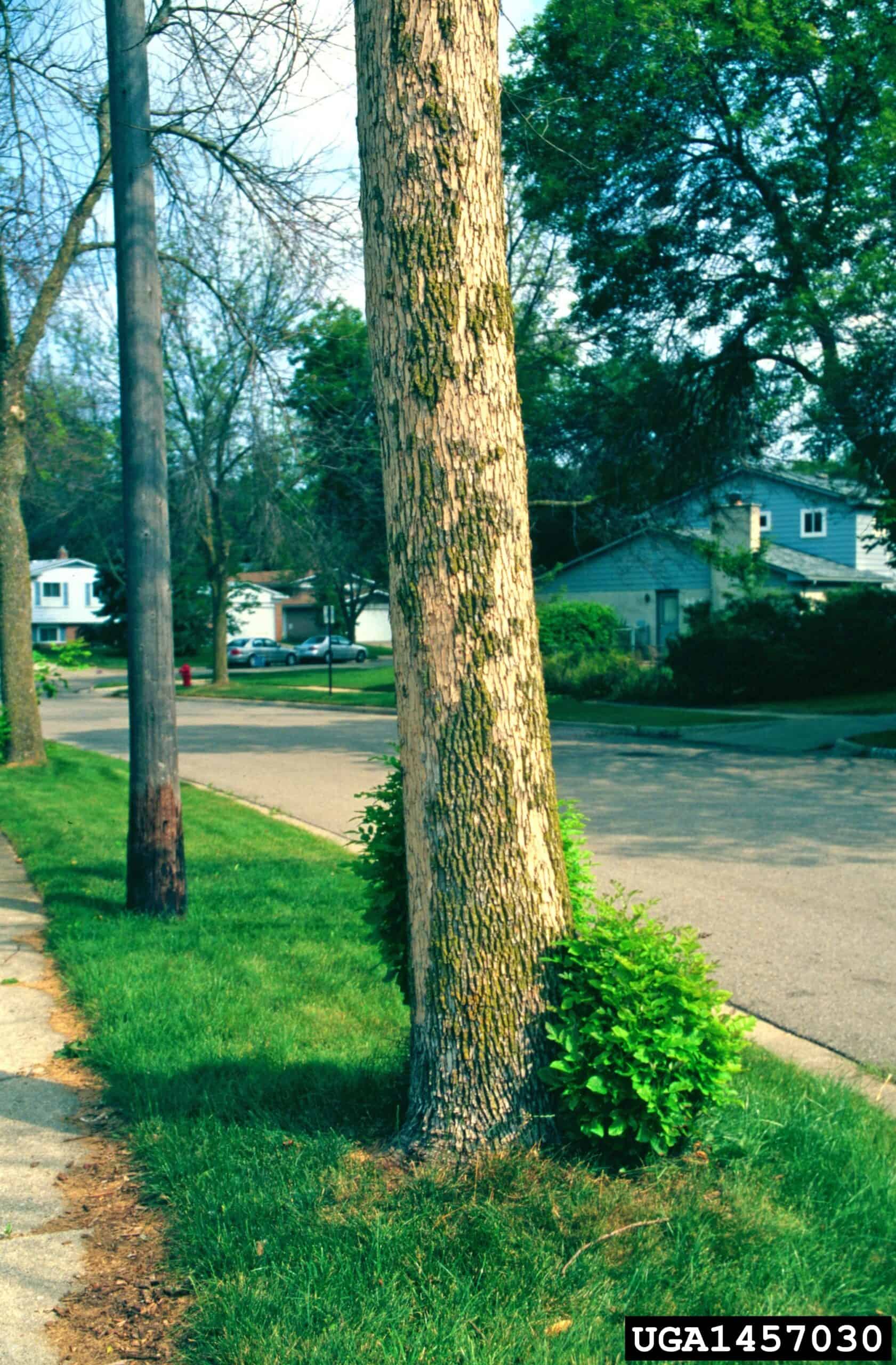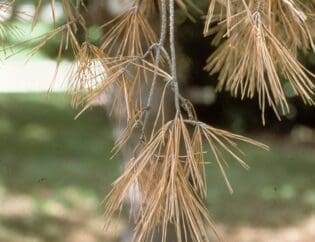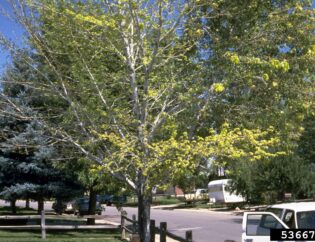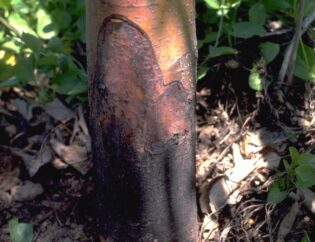
Concurrently, climate change is altering regional climates, which can affect the spread and impact of EAB as well as the resilience of ash trees to infestation. Understanding the synergistic effects of climate change and EAB invasion is crucial for developing effective management strategies to mitigate the impacts on forest ecosystems.
This introduction provides an overview of the challenges posed by these converging issues.
The Invasive Emerald Ash Borer
Amidst the numerous threats to North American forestry, the invasive Emerald Ash Borer stands out for its devastating effects on ash tree populations. Originating in Southeast Asia, this beetle has wreaked havoc since its 2002 detection in Michigan, leading to the destruction of tens of millions of ash trees across 30 states.
The Emerald ash borer impact extends beyond ecological damage, causing substantial economic losses. Although EAB treatment options exist, they are more preventative than curative and a lot of times removal of the infested trees is required. The EAB geographic distribution continues to expand, necessitating vigilant EAB signs and prevention efforts.
The effectiveness of EAB treatments is higher on trees with less than 50% canopy thinning. https://hort.extension.wisc.edu/articles/professional-guide-emerald-ash-borer-insecticide-treatments/
Government agencies and stakeholders emphasize the importance of EAB reporting and updates to manage the spread, with current information accessible through various USDA platforms, including social media and dedicated hotlines.
Climate Change Effects on Midwestern Landscapes
The emerald ash borer’s devastation intersects with climate change, further altering Midwestern landscapes by influencing tree species resilience and distribution.
Climate change exacerbates these impacts, with rising temperatures and changing precipitation patterns reshaping the region’s ecological character.
This necessitates robust potential solutions that prioritize tree conservation and ecological restoration. Strategic long-term planning is essential to adapt and mitigate these changes, involving community engagement to foster resilience in urban and rural forests.
Embracing wholesome practices like prevention, mitigation and other indigenous forestry practices, as done by the Menominee Indian Tribe, can serve as a model for sustainable forest management.
The collaborative efforts in projects like Visualizing Forest Futures highlight the importance of integrating traditional knowledge with scientific research to address the complexities of climate change on forest landscapes.
Shifting Forest Midwestern Compositions
Shifting compositions of Midwestern forests, influenced by the invasive emerald ash borer and climate change, are leading to notable changes in regional biodiversity and landscape structure.
These alterations reflect the dynamic nature of forest adaptation, which is critical for maintaining ecological resilience in the face of environmental threats.
Species displacement is becoming more common, as traditional hardwoods decline and others, like black cherry trees, emerge as dominant.
Efforts to enhance climate resilience are imperative, as this determines the long-term sustainability of forests amidst changing weather patterns and the advancing threats posed by invasive species and climate change.
Climate Change and the Emerald Ash Borer
Understanding the interaction between climate change and the emerald ash borer is crucial for developing effective forest management strategies. Climate change adaptation, forest resilience, and invasive species management are all interlinked areas that require attention to mitigate the emerald ash borer impact.
Here are key considerations:
- Climate Change Adaptation: Strategies must be devised to bolster forest resilience against both abiotic and biotic stressors, including extreme weather events and invasive species.
- Invasive Species Management: Systematic approaches to manage the spread of the emerald ash borer can help maintain forest health and biodiversity.
- Forest Conservation Strategies: Developing and implementing conservation plans can ensure the long-term sustainability of forests amidst the challenges posed by climate change and invasive species.
Forecasting EAB Infestation
Amidst ongoing conservation efforts, accurately forecasting Emerald Ash Borer (EAB) infestations is increasingly critical to mitigating its destructive impact on North American ash tree populations.
Researchers have developed a model that integrates phenology and climate suitability to improve EAB detection methods. The model’s precision in predicting EAB emergence aids in the timely implementation of EAB control strategies, which is essential due to the EAB’s significant impact on biodiversity.
However, EAB management challenges persist, including the pest’s concealed life stages and rapid spread. Understanding EAB and tree population dynamics through models and observations is vital for conservation, enabling better anticipation of infestations and facilitating proactive measures to preserve forest ecosystems against this invasive threat.
Future Forest EAB Management Challenges
While the predictive models for Emerald Ash Borer infestation offer valuable tools for proactive measures, the challenges of future forest EAB management remain multifaceted. This is particularly true in the face of evolving climate conditions and the need for integrated ecological strategies.
Addressing these challenges requires:
- Climate Change Adaptation: Developing dynamic management practices that can respond to rapid environmental changes.
- Sustainable Strategies: Ensuring forest resilience through practices that balance ecological integrity with economic needs.
- Community Engagement: Fostering partnerships that include diverse stakeholders and incorporate traditional ecological knowledge.
Integrated management approaches must prioritize the health of forest ecosystems while also engaging local communities in meaningful ways. Through collaborative efforts, we can develop a cohesive response that aligns with preservation values and enhances the ability of forests to adapt to climate change.
EAB Photo by
Steven Katovich, Bugwood.org
*we are not affiliated with bugwood.org


